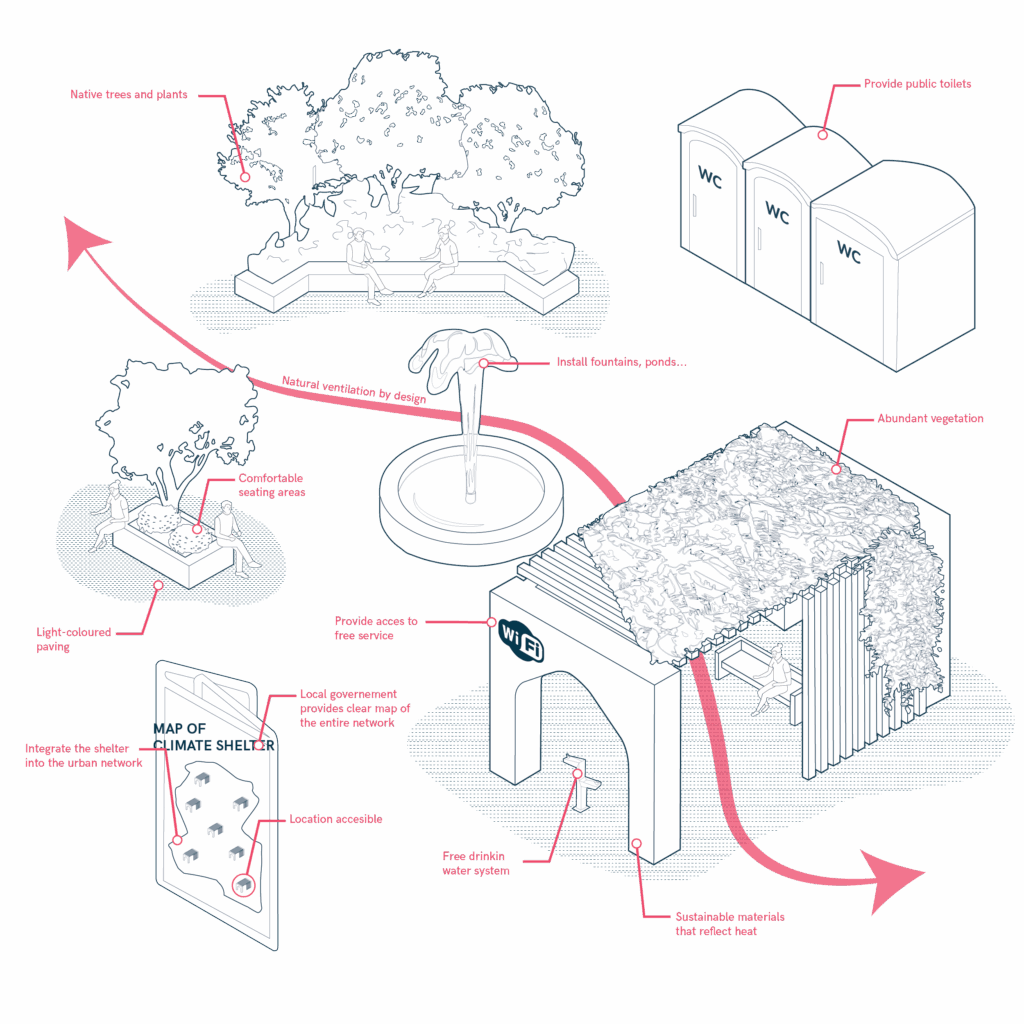Climate Shelter
A climate shelter is a natural or urban space designed or adapted to provide favourable environmental conditions that protect people (and other species) from extreme weather events, such as heat or cold waves. These shelters can be parks, squares, courtyards, libraries, community centres, among others, and their function goes beyond temporary relief: they also promote public health, social well-being, biodiversity and help mitigate climate change. To be effective, they must be accessible, equitable and have elements such as vegetation, water, ventilation and sustainable materials.

- Select a location that is accessible to the entire population.
- Incorporate abundant vegetation, with native trees and plants to provide shade and coolness.
- Install fountains, ponds or free drinking water systems to cool the environment and people.
- Ensure natural ventilation by design that is open or aligned with prevailing air currents.
- Use sustainable materials that reflect heat, such as light-coloured paving and green roofs.
- Include seating areas with comfortable furniture that is protected from the sun or cold.
- Provide access to free services such as toilets, WiFi or cultural spaces to encourage their use.
- Integrate the shelter into the urban network of public spaces, ensuring its equitable distribution throughout the city.
- Ensure as the local government to provide a clear map of the entire network of climate shelters.
